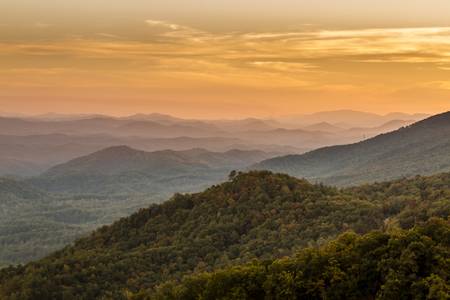Some cynical philosopher stenciled a few words in the center of the park road. They read: “Nature is wrong.” The words are fading away, which brings a smile. Nature will have the last word, whether we heed her or not.
I feel there is a cosmic law: If a thought-bearing species cannot fit harmoniously on their planets, they will not have any place in the cosmos. For earthlings, that’s why fantasies of terraforming Mars are so false.
We’re compelled to find out what the relationship between thought and nature is. That’s the true way of exploring humanity’s place in the universe.
Using conscious thought, we humans are able to unlock the secrets of the universe on one hand, and strip mine the entire planet for ‘resources’ on the other. Yet it is only with deep humility with respect to thought can one perceive beauty, feel mystery, and touch sacredness imbuing nature and the cosmos.
 There is a vast difference between mystery and mysteriousness. What is mysterious can and should be discovered, uncovered and explained. But the feeling of mystery is the same in all people of all times, whether for the cave artists of Lascaux or the men walking on the moon. Mystery is awareness of the infinite, requiring at least a moment of inward space when knowledge and the known have ceased operating.
There is a vast difference between mystery and mysteriousness. What is mysterious can and should be discovered, uncovered and explained. But the feeling of mystery is the same in all people of all times, whether for the cave artists of Lascaux or the men walking on the moon. Mystery is awareness of the infinite, requiring at least a moment of inward space when knowledge and the known have ceased operating.
Science at its best dispels mysteries and retains a feeling for mystery. The idea that everything can be explained is anathema not just to a sense of humility and mystery, but also to scientific investigation. The best scientists realize that there are always new discoveries to be made, and they continually ask questions, thereby opening up new areas for inquiry and investigation.
Scientific knowledge is rightly an accumulative endeavor, even when entire areas of received wisdom are occasionally overturned by new evidence. Mystery, on the other hand, is a non-accumulative state of being. A sense of mystery is first and last an orientation to nature and the universe.
True scientists acknowledge that the mysteriousness of the universe is infinite. That adds to their sense of its mystery, while sustaining a passion for exploring new horizons. But even if all mysteries could be explained, the mystery of being would remain.
‘Higher thought’ is the most powerful adaptation that nature has evolved, and yet it is founded on a principle that contradicts the way nature evolves. Thought separates, while nature unfolds in seamless wholeness. That’s why relying on science and knowledge to understand humankind’s place in the universe is an existential error and logical impossibility.
In both the scientific and the contemplative spheres, insight emerges between the spaces of thought, not at the logical end of thinking. Restoring a harmonious relationship between humans and nature turns on our gaining insight into thought itself.
The idea of ‘restoring’ is somewhat inaccurate however. Indigenous peoples often had, and some still have, an intuitive, symbolic grasp of the limits of thought. However their insights were expressed within the contexts of their traditions, beliefs and rituals, which are all products of thought. I know of no ancient or extant culture that is based on direct insight into the nature and limitation of thought itself.
In any case, we cannot return to the old ways of understanding and maintaining balance with nature. Symbolic thought has produced so much disorder and imbalance that the only way ahead now is to go to the root and awaken a deepening insight into thought itself. Then a new kind of culture can and will emerge.
produced so much disorder and imbalance that the only way ahead now is to go to the root and awaken a deepening insight into thought itself. Then a new kind of culture can and will emerge.
It’s near sunset. Riding the bike to the edge of town, where open fields are rapidly being eaten away by ‘progress’, one can still see for miles looking toward the foothills. The skies are gray and opaque to the west, obscuring the setting sun, though a few remnants of the billowy white cumulus that graced the day remain along the horizon.
Toward the foothills, the skies are mostly clear, and the canyon is sharply etched in the fading light. A pheasant, after flying a short distance just above the ground, fans its broad tail feathers and glides to a halt. A pair of Canadian geese flies in low, honking loudly, taking a flight path along a creek nearly overflowing its banks.
Suddenly I see something over the fields I never thought I’d see again—a ‘ kite’ falcon! It’s a couple hundred meters away, but its distinctive hovering and plummeting flight pattern is unmistakable.
The raptor then flies closer, directly across from where I sit. It hovers for 15 or 20 seconds before falling to the ground, its wings held back in a ‘V.’ It’s an exquisitely graceful sight, one of the most beautiful in all of nature. Nature is right, man is wrong.
Martin LeFevre

